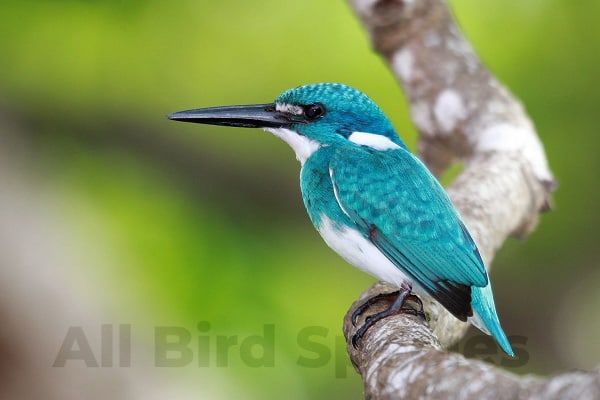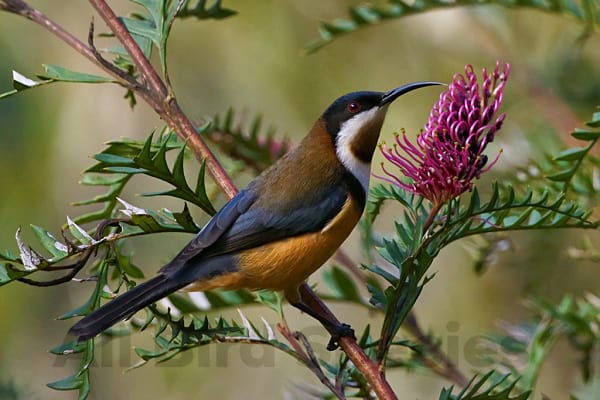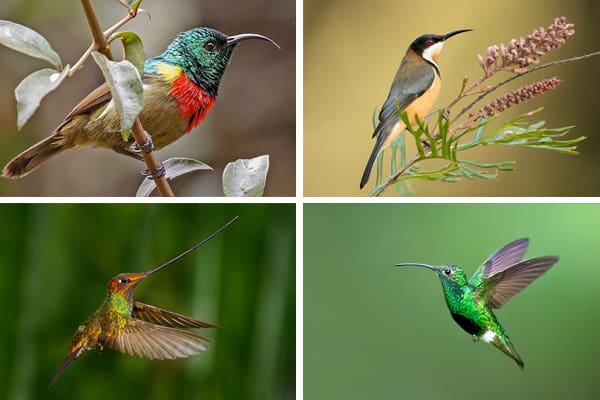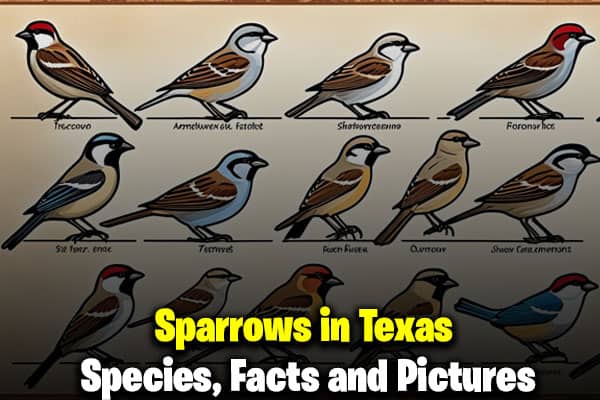Small Birds with Long Beaks (With Photos and ID Guide)
Did you know nearly 20% of birds have special beaks? These beaks help them live in unique places. This guide will show you seven amazing birds, like hummingbirds and kingfishers. They show how different and beautiful birds can be.
In this guide, you’ll learn about their special traits and where they live. You’ll see how each bird is different. Get ready for a colorful journey into the world of small birds with long beaks!
Characteristics of Small Birds with Long Beaks
Small birds with long beaks have interesting traits. Their beaks help them survive and grow in different places. These beaks are key for finding food like nectar or insects.
Unique Adaptations
These birds have special beaks for their homes. Their long beaks reach deep into flowers for nectar. Some even have special tongues to get nectar better.
Each bird’s special feature helps them live in their own way.
Feeding Habits
How these birds eat affects their health and babies. They eat nectar, fruits, and insects. Insects give them protein for growing and energy.
Knowing how they eat helps us see their place in nature. It shows how they work with plants and animals.
1. Sword-billed Hummingbird
- Scientific Name: Ensifera ensifera
- Size: 15–20 cm (5.9–7.9 in)
- Weight: 8–12 g (0.28–0.42 oz)
- Lifespan: Up to 5 years
- Diet: Nectar, particularly from long-tubed flowers and small insects
The Sword-billed Hummingbird is a fascinating bird. It has a very long bill. This helps it in its habitat.
This bird lives in specific places. It loves montane forests and their edges in northwestern South America. Countries like Colombia and Ecuador are home to it.

The lush greenery and diverse flora are perfect for it. These ecosystems offer great places for feeding and nesting.
Diet and Feeding Behavior
The Sword-billed Hummingbird eats nectar from long, tubular flowers. Its bill lets it reach nectar that others can’t. It also eats insects and spiders for protein.
This special way of eating is key for its survival. It shows how well it has adapted to its habitat.
| Aspect | Description |
|---|---|
| Habitat | Montane forests and edges in northwestern South America |
| Primary Diet | Nectar from long, tubular flowers |
| Additional Diet | Insects and spiders for protein |
| Feeding Behavior | Utilizes long bill to access nectar and hunt insects |
2. Cerulean Kingfisher
- Scientific Name: Alcedo coerulescens
- Size: 15–17 cm (5.9–6.7 in)
- Weight: 30–50 g (1.1–1.8 oz)
- Lifespan: Up to 5 years
- Diet: Fish, small invertebrates, and insects
The Cerulean Kingfisher is a bird that catches the eye. It’s known for its bright colors and special features. Birdwatchers love it for its looks and where it lives.

Physical Appearance
The Cerulean Kingfisher has a bright blue body. Its long, pointed beak helps it catch small fish. The white throat and belly add to its beauty.
These traits help it hunt and hide in its home.
Habitat Preferences
This bird likes places near water. It lives on riverbanks, streams, and in mangrove forests in Indonesia. These spots have lots of food and good places to nest.
Seeing the Cerulean Kingfisher in its home is special. It lets you connect with nature and see its beauty.
3. Little Spiderhunter
- Scientific Name: Arachnothera longirostra
- Size: 15–18 cm (5.9–7.1 in)
- Weight: 10–15 g (0.35–0.53 oz)
- Lifespan: Up to 5 years
- Diet: Nectar, insects, and spiders
The Little Spiderhunter is a bird that catches the eye. It has a long, curved beak and a slender body. This makes it easy to spot in places like forests and mangroves in Asia.

This bird eats nectar, spiders, and insects. Its diet helps pollinate flowers and keep insects in check. Watching it feed shows how it uses its beak to find food.
| Aspect | Details |
|---|---|
| Identification | Slender body, long down-curved beak |
| Habitat | Forests and mangroves in South and Southeast Asia |
| Behavior | Feeds on nectar, spiders, and insects; use long beak for foraging |
4. Eastern Spinebill
- Scientific Name: Acanthorhynchus tenuirostris
- Size: 14–16 cm (5.5–6.3 in)
- Weight: 10–14 g (0.35–0.49 oz)
- Lifespan: Up to 5 years
- Diet: Nectar, insects, and fruits
The Eastern Spinebill is a standout among Australian birds. It’s known for its bright colors and unique traits. This small bird lives mainly in the east of Australia, where it fits well into different environments.

Coloration and Features
The Eastern Spinebill’s colors are amazing. It has black, white, and reddish-orange feathers. This mix makes it look stunning and helps it hide in the woods.
Its long, curved beak is perfect for drinking nectar. This lets the Eastern Spinebill reach the flowers’ nectar easily.
This bird is more than just pretty. It helps plants by pollinating them when it eats nectar. It also eats small bugs, which adds to its role in the ecosystem.
| Feature | Description |
|---|---|
| Size | Approximately 10-12 cm in length |
| Wingspan | About 15-20 cm |
| Coloration | Black back, white underparts, reddish-orange throat and forehead |
| Beak | Long, slender, and curved, suited for nectar feeding |
| Habitat | Woodlands, gardens, and shrublands in eastern Australia |
This bird is not just beautiful. It shows how connected everything is in nature. Learning about the Eastern Spinebill’s looks and role in nature makes us appreciate these birds more.
5. Mountain Velvetbreast
- Scientific Name: Lazuliocoryphus japonicus
- Size: 12–13 cm (4.7–5.1 in)
- Weight: 8–10 g (0.28–0.35 oz)
- Lifespan: Up to 5 years
- Diet: Nectar, insects, and fruits
The Mountain Velvetbreast is a stunning bird found in high-altitude forests. It has shiny green feathers and a long, curved beak. This hummingbird has special features that help it live well in tough places.

This bird loves to eat nectar from flowers. It helps plants make seeds by pollinating them. Sometimes, it also eats insects for extra protein.
Identifying Small Birds with Long Beaks
Spotting small birds with long beaks can make birdwatching more fun. Knowing what to look for helps you spot them better. Here are some tips for observing these birds in their natural homes.
Key Identification Tips
Here are some tips for identifying small birds with long beaks:
- Beak Shape: Look at the beak’s length and shape. Some beaks are straight, while others are curved or hooked.
- Feather Coloration: Note the bird’s colors. Bright colors can help you identify them.
- Size and Behavior: See how big the bird is compared to its surroundings. Also, watch how it eats. Different birds eat in different ways.
- Location: Know where these birds usually live. This helps you guess who they are.
Using Photos for Better Recognition
Photos can really help you recognize small birds better. Here’s how to use them:
- Field Guides: Get a field guide with pictures. This helps you compare what you see with what you know.
- Apps: Use birdwatching apps. They have pictures and info on local birds.
- Personal Photos: Take pictures of birds you see. Looking at them later can show you things you missed.
Where to Spot These Birds
Finding great birdwatching spots can make spotting birds with long beaks more fun. Many parks and reserves in the United States are home to these birds. You can see them in their natural homes by going to the right places at the right times.
Best Locations in the United States
- Everglades National Park, Florida
- Point Reyes National Seashore, California
- Great Smoky Mountains National Park, Tennessee/North Carolina
- Rocky Mountain National Park, Colorado
- Evergreen Cemetery, St. Augustine, Florida
Each spot offers a unique chance to see birds. From the Everglades’ diverse ecosystems to the Rocky Mountains views, your search for small birds with long beaks can be rewarding.
Tips for Birdwatching Enthusiasts
To enjoy birdwatching more, follow these tips:
- Go early morning or late afternoon when birds are most active.
- Bring binoculars to see birds better.
- Learn bird calls and songs to spot them more easily.
- Research local birdwatching spots for the best times to see birds.
- Be quiet and patient so as not to scare the birds away.
Using these tips and choosing the best spots, you’ll have a great time spotting birds and enjoying nature.
Read More🐦Related Articles:
| Hawks in Illinois |
| Owls in Arkansas |
| Hummingbirds in Florida |
| Birds That Lay Blue Eggs |
| Birds With Orange Heads |
Final Thoughts
Reflecting on small birds with long beaks, we see amazing adaptations. These birds thrive in many places. The Sword-billed Hummingbird and the Eastern Spinebill are just a few examples.
They have special ways to eat, like drinking nectar or catching insects. This shows how they connect with their world.
These birds are not just important for the environment. They also make us appreciate nature more. Watching them in their homes can make us feel amazed.
It doesn’t matter where you live. You can find these birds and enjoy their beauty. They add so much to our world.
Learning about these birds helps us protect their homes. It also makes us value our planet’s variety. So, get your binoculars ready and explore your local parks. Discover the wonders of the bird world!







